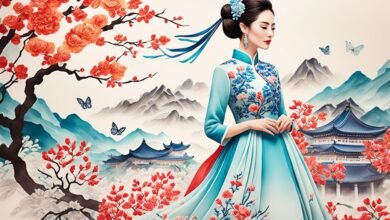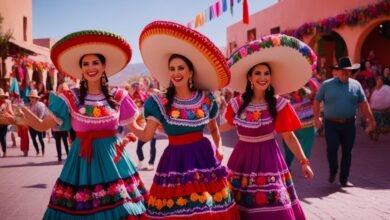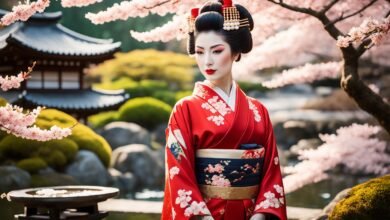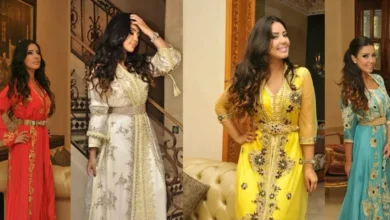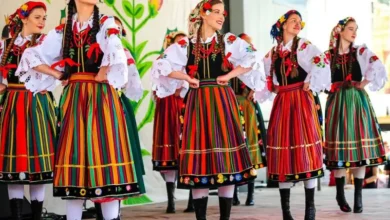Close your eyes and imagine walking the lively streets of Brazil. The bright sun warms the colorful buildings. You feel the energy of the music and the happiness of the people. The local traditional clothing catches your eye.
Brazil’s culture is deep and its clothing shows it. It shares stories from the nation’s many parts. The clothes are full of bright colors, detailed patterns, and a bit of Brazil’s spirit. They truly are works of art.
As you keep walking, you see the amazing blend in Brazilian clothing. It’s a mix of influences from all over the world. This mix makes each piece special. It shows a strong link between the past, traditions, and today’s world.
Come along as we explore Brazil’s traditional clothing. We’ll see everything from ancient weaves to modern takes on historical outfits. Be prepared to get inspired and learn. We’re heading into a world where fashion meets deep culture and history.
Traditional Clothing in Different Regions of Brazil
Traditional clothing in Brazil changes from place to place. It shows the many cultures that make up the country. Each area’s clothing is a special way to show their history and customs.
Southern Plains: Gaucho Style
The southern plains are famous for their cowboys, called gauchos. Their clothes, like wide pants, tall boots, and hats, fit their way of life perfectly. It’s tough and made for their rugged land and hard work.
Amazon Region: Indigenous Style
The Amazon is full of different tribes, and their clothes are very unique. They wear tunics with detailed designs along with face paint and beads. These outfits show their special style and their bonds with nature and their past.
Bahia Region: African Influence
Up in the northeast, Bahia’s clothing mixes African and native elements. They wear long skirts and use colorful fabrics, often with detailed embroidery. A type of lace called bordado richelieu is also very popular. This lace is a key decoration in their clothes.
Throughout Brazil, traditional clothes are a big part of culture. They represent the country’s deep cultural history and its colorful diversity.
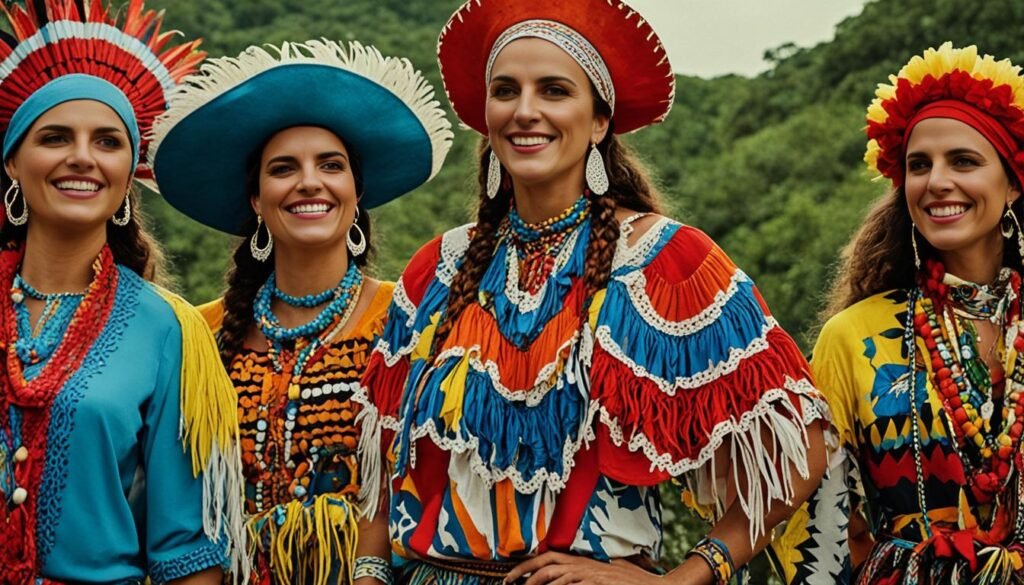
The picture above shows how Brazil’s traditional clothes are like a rainbow. They vary in style and color depending on the area. But they all share deep cultural meanings and are very eye-catching. These outfits are a wonderful mix of different influences.
Traditional Clothing in the Country vs. City
In Brazil, traditional clothing can vary greatly based on where you are. In the countryside, people wear simple and low-cost clothes. These are usually made of a budget-friendly cotton fabric.
These clothes are all about ease and staying comfortable. They’re designed to help with the physical work and life in the rural areas. Outfits feature loose cuts for movement, and cotton keeps things cool in Brazil’s heat.
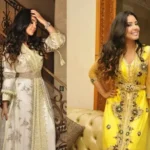 Embrace Elegance with Traditional Clothing in Morocco
Embrace Elegance with Traditional Clothing in Morocco
On the other hand, urban fashion in Brazil is heavily influenced by the city life. It’s a mix of modern styles and Western culture. Here, you’ll see people sporting short skirts, dresses, T-shirts, and jeans.
Jeans are especially loved across the country. Their ability to fit in anywhere, from everyday scenes to fancy events, makes them a top choice.
This difference in dress styles shows how Brazil’s fashion is both traditional and modern. It highlights the rich heritage and local tastes of the country against a background of global style.
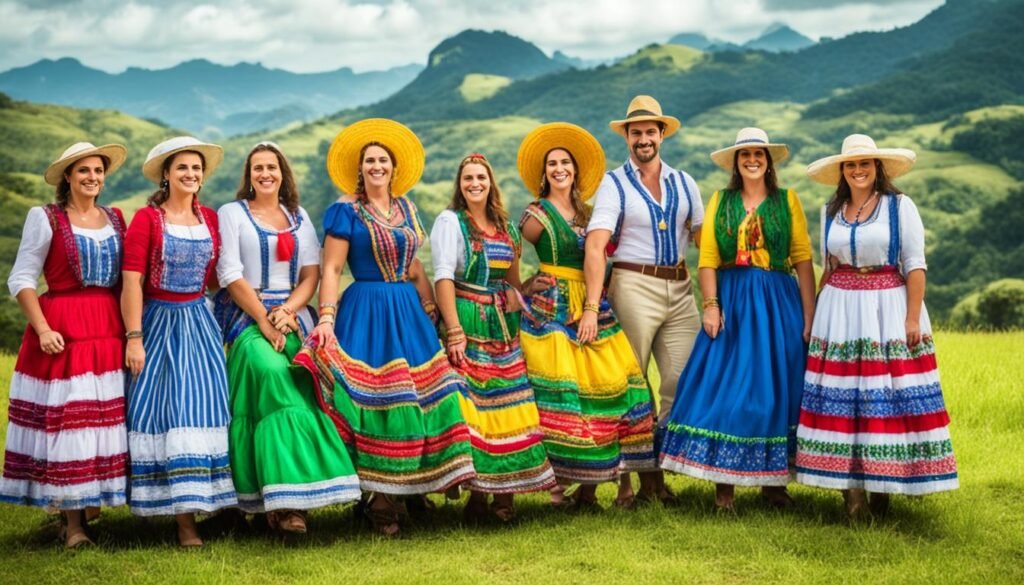
The Cultural Significance of Traditional Attire in Brazil
Brazil’s traditional clothing carries a lot of cultural weight. It stands for the vast mix of people and history that is uniquely Brazilian.
These clothes also honor the past, celebrating the cultures that have melded into what Brazil is today. They offer a way to show pride and express oneself.
Traditional clothing in Brazil is an embodiment of history, cultural diversity, and the vibrant spirit of the Brazilian people. It tells a story of resilience, unity, and the remarkable fusion of indigenous, European, and African influences.
Traditional Clothing in Brazil: Country vs. City
| Country Attire | City Attire |
|---|---|
| Comfortable and affordable | Modern and Western-style |
| Inexpensive cotton material | Varied fabric choices |
| Loose-fitting designs for ease of movement | Trendy and form-fitting styles |
The table shows how different traditional Brazilian clothing can be. It brings out the unique features of rural and city wear. Rural clothes focus on being comfy and kind to the wallet. City fashion, meanwhile, welcomes the latest global trends and styles.
Influence of Media and Celebrities on Brazilian Fashion
Brazilian fashion gets a lot of ideas from the media and celebrities. In Brazil, TV soap operas, called “novelas,” are super popular. They really influence what people wear.
The clothes actors wear in these shows often become the newest fashion trend. People love to copy their favorite character’s style. They want to know where to buy the same clothes.
Fashion designers and shops want their items to be seen in these shows. They work hard to make sure they fit the current trends. This way, they can grab customers’ attention.
Actors, musicians, and online influencers are also big fashion trendsetters. What they wear to big events sparks new styles. These trends then become popular among everyone.
Celebrity Fashion Icons in Brazil
- Gisele Bündchen: This famous supermodel has influenced Brazilian fashion a lot. Her classy style is loved by many.
- Anitta: A well-known singer, Anitta’s colorful fashion stands out. She’s especially popular among young people.
- Camila Coelho: She’s a top fashion influencer. Her chic style has a large following online, inspiring many to dress like her.
“Fashion lets us show who we are. Celebrities and media stars can lead people to new trends. Brazilian fashion is influenced a lot by these figures. They are our style inspiration. We try to mix their look with our own, making unique statements.”
Embrace Heritage with Traditional Polish Clothing
The impact of media and famous faces keeps Brazilian fashion fresh. It mixes old traditions with the new. This makes the clothing scene in Brazil very diverse and exciting.
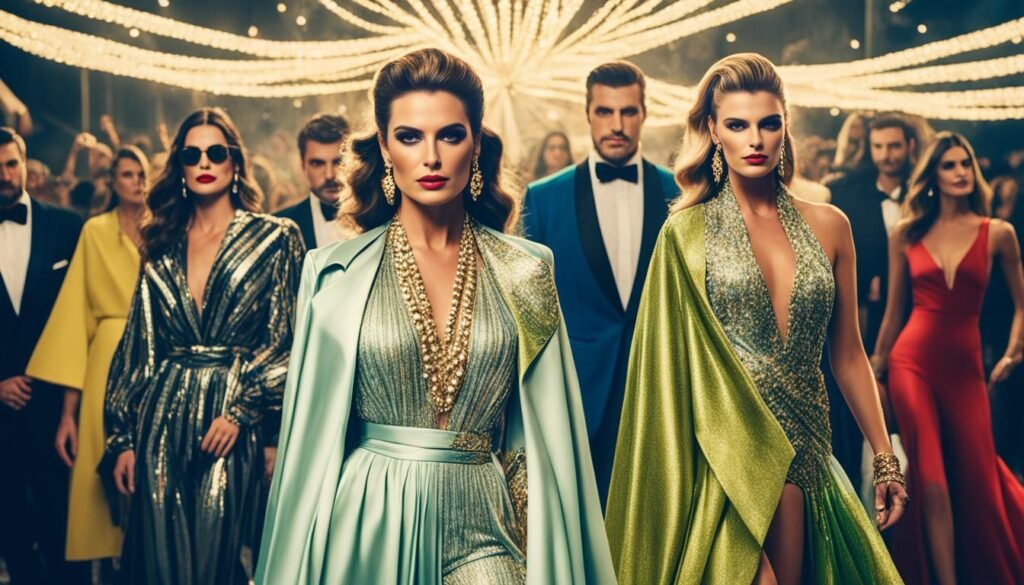
Top Brazilian Fashion Magazines
If you want to be up to date with fashion in Brazil, you have great magazines to turn to. They are full of the latest trends and helpful tips. They’re a great inspiration for anyone interested in Brazilian fashion.
| Magazine Name | Description | Website |
|---|---|---|
| Vogue Brasil | Vogue Brasil is a top fashion magazine in Brazil. It shows the newest trends and features talks with fashion leaders. | Visit Website |
| Elle Brasil | Elle Brasil covers fashion, beauty, lifestyle, and culture. It looks at both local and global trends, making it perfect for fashion lovers. | Visit Website |
| Marie Claire Brasil | Marie Claire Brasil talks about women’s empowerment and fashion. It offers a new view on style and supports important voices in fashion. | Visit Website |
These magazines highlight not only what’s trendy in fashion but also delve into Brazil’s cultural roots. They are a place for designers, stars, and fans to show their love for style and creativity.
Brazilian Fashion and Emphasis on Body Confidence
The fashion scene in Brazil is deeply tied to its love for showing skin and body pride. This cultural trait shines through in their bold and revealing styles. Traditional clothes in Brazil often hug the body well, showing off its beauty.
Brazilian women are famous for their confidence in their bodies. Walking from Rio’s beaches to São Paulo’s streets, they show off in clothes that reveal and celebrate their curves. They wear outfits that highlight their femininity and love for their bodies.
The Brazilian bikini bottom is a standout in their fashion world. It’s famous for being smaller and bolder than in other places. This style choice showcases the Brazilian approach to body positivity and self-expression.
The country’s fashion celebrates individual beauty with every piece. From carnival outfits to everyday clothes, each item is filled with color and story. This diverse fashion world mirrors Brazil’s rich cultural tapestry.
The drive for body confidence extends to Brazilian men as well. They find fashion that flatters their bodies, like fitted shirts and jeans, quite appealing. This shows how Brazilian fashion is about feeling good in your own skin.
Brazil is also moving towards fashion that welcomes all body shapes and sizes. This shift brings about a more diverse industry, embracing beauty in its various forms. It’s a step towards inspiring self-love amongst people from all walks of life.
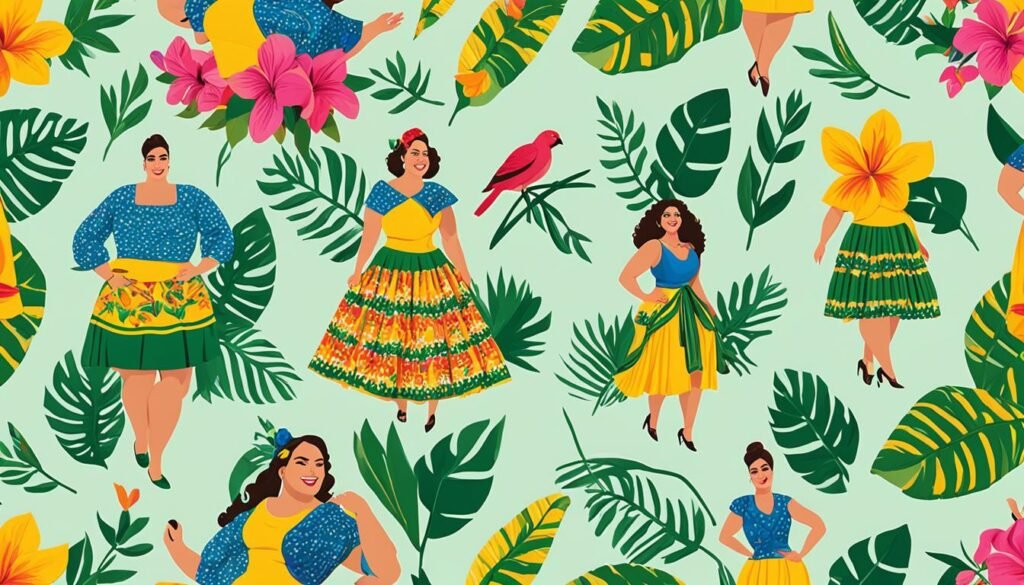
Key Takeaways:
- Brazilian fashion embraces body confidence and self-expression.
- Traditional clothing in Brazil tends to be more revealing and form-fitting.
- Women in Brazil love showing skin and celebrating their curves.
- The Brazilian bikini bottom is an iconic symbol of body confidence and pride.
- Men in Brazil also embrace fashion that highlights their physique.
- The fashion industry in Brazil is becoming more inclusive and diverse.
Traditional Dress in Argentina and Its Folklore Influence
In Argentina, traditional dress tells a story. It shows the country’s unique history and culture. The famous Tango and Chacarera dances play a big role in this.
The Gaucho outfit is very famous in Argentina. It started in the 17th Century when horses arrived from Europe. A Gaucho wears black pants, a white shirt, and a special hat. Also, they have a red handkerchief and a brown sash. Their clothes show a deep connection to nature and freedom.
 Embrace Elegance with Traditional Japanese Clothing
Embrace Elegance with Traditional Japanese Clothing
These clothes not only remember the past but also show who the people of Argentina are. The Tango outfits and Chacarera clothes bring out the beauty of Argentine culture. They show off skill and love for dance.
